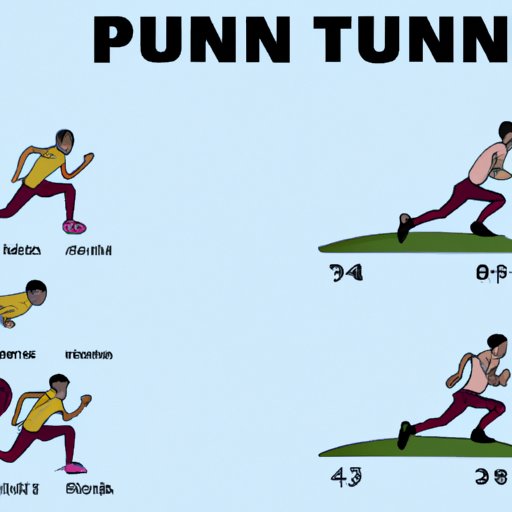Introduction
Running faster can be a challenge, but it is an important part of any athlete’s training regimen. Being able to run quickly can help you reach your goals in any sport or activity, whether it’s running a 5k or playing soccer. It’s also important to understand the mechanics of running and identify areas that need improvement. This article will provide an overview of how to run faster exercises including plyometrics, hill sprints, tempo runs, strength training, and sprint intervals.
Identify Your Weaknesses
Before you start running faster exercises, it’s important to analyze your running form and identify any weak points. Common mistakes include not pushing off the ground with enough power, overstriding, and not swinging your arms properly. Taking a video of yourself running can help you pinpoint any issues. Once you know what needs to be improved, you can focus on the exercises that will help you get better.
Plyometric Exercises
Plyometric exercises are designed to improve power and speed. These exercises involve explosive movements like jumping and hopping. They increase the strength of your muscles and ligaments, which helps you generate more power when running. Examples of plyometric exercises include box jumps, lateral hops, single-leg hops, and depth jumps.
Hill Sprints
Hill sprints are a great way to build power and speed. Running up a hill puts extra strain on your muscles, forcing them to work harder. This helps build strength, which translates into faster running speed. When doing hill sprints, make sure to push off with your toes and drive your knees up high. Focus on good form and take short, quick strides.
Tempo Runs
Tempo runs are a great way to increase your running speed. These runs involve running at a steady, comfortable pace for an extended period of time. The goal is to maintain this pace without slowing down. Tempo runs help you develop your aerobic capacity, which improves your endurance and allows you to run faster for longer periods of time.
Strength Training
Strength training is essential for any runner who wants to improve their speed. Weight lifting and bodyweight exercises can help you build strength, which translates into more powerful running. Examples of strength training exercises include squats, deadlifts, lunges, and pull-ups. These exercises can help you build muscle and increase power.
Sprint Intervals
Sprint intervals are another great way to increase your running speed. These intervals involve alternating between short bursts of intense running and jogging or walking. The goal is to push yourself to your limits during the sprints, then recover during the rest periods. Sprint intervals help you build speed and power, and they can also help you become more efficient with your energy.
Conclusion
Running faster takes dedication and hard work, but it can be achieved with the right exercises. Plyometrics, hill sprints, tempo runs, strength training, and sprint intervals are all effective ways to increase your speed. Analyzing your running form and identifying weaknesses can help you focus on the exercises that will have the most benefit. With these exercises, you can reach your running goals and become a faster runner.
(Note: Is this article not meeting your expectations? Do you have knowledge or insights to share? Unlock new opportunities and expand your reach by joining our authors team. Click Registration to join us and share your expertise with our readers.)
